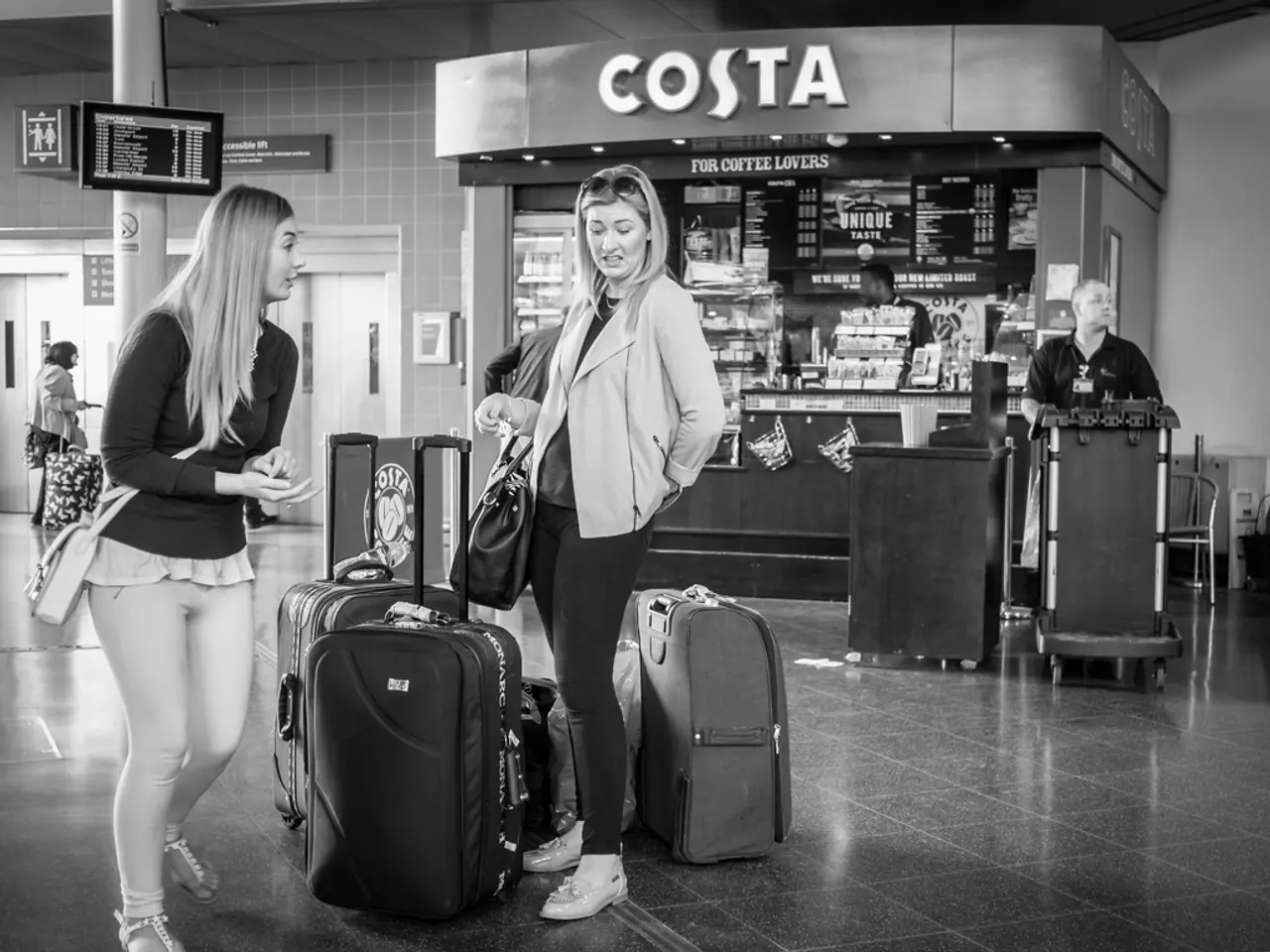EU Airports to Permit Carry-on Liquids
The European Union is set to introduce new screening equipment for carry-on luggage at select airports, aiming to enhance security measures and potentially change current rules regarding liquids, aerosols, and gels (LAGs) in cabin bags.
The new equipment, developed by Smiths Detection, includes the Hi-Scan 6040 CTix machine, which boasts improved detection capabilities compared to traditional X-ray scanners, particularly when it comes to detecting liquid explosives [1][2][3].
Availability
Some EU airports, such as Rome and Milan, have already installed this advanced technology, and after recertification by the EU (following approval by the European Civil Aviation Conference in June 2025), these airports can start using it to lift the 100ml limit, allowing up to 2 litres of liquids in cabin luggage [2][3]. However, deployment is selective and dependent on airports upgrading to this specific screening equipment [4].
Cost
While specific cost details for the Smiths Detection Hi-Scan 6040 CTix system or for broader deployment across EU airports are not publicly disclosed, the transition implies significant investment by airports to acquire and install this next-generation equipment [1][3][4]. The Airports Council International Europe (ACI EUROPE) has raised concerns about the slow and cumbersome EU testing and certification regime, suggesting that costs are compounded by procedural delays and the need for repeated evaluations [1][3][4].
Implementation Timeline
The equipment was recertified by the EU in mid-2025, with the lifting of the 100ml liquids restriction formally announced around July 2025. Airports that already have the equipment installed can implement these new rules immediately or shortly thereafter; however, full EU-wide deployment will take more time since not all airports currently have the technology [1][2][3][4].
The process has been slower in the EU compared to the UK, where some airports allowed the 2-litre limit as early as April 2025 [4]. ACI EUROPE calls for a complete overhaul of the EU's testing and certification process to accelerate adoption and better protect aviation security in the future [1][3][4].
In summary, the new carry-on screening equipment is available now but only at a limited number of airports equipped with Smiths Detection technology. The cost of widespread deployment is implied to be substantial but not explicitly reported. The implementation timeline is ongoing, with gradual roll-out expected after EU recertification in mid-2025, but broader adoption depends on airport upgrades and improvements in the EU certification system.
The European Commission has confirmed that changes are in the preparation stage, and it is expected that more airports will adopt this technology in the coming days, potentially revolutionising the carry-on luggage experience for passengers across the EU.
References:
[1] Corriere della Sera, 2025. "New Security Measures for Carry-On Luggage in EU Airports."
[2] European Civil Aviation Conference, 2025. "Recertification of Advanced Screening Technology for Carry-On Luggage."
[3] Airports Council International Europe, 2025. "ACI EUROPE Calls for Overhaul of EU's Testing and Certification Process."
[4] The Guardian, 2025. "UK Airports Lead the Way in Allowing Larger Liquids in Carry-On Luggage."
- The new carry-on screening equipment, developed by Smiths Detection, is expected to positively impact the health-and-wellness of travelers, as it may eliminate the hassle of adhering to strict liquid restrictions in cabin luggage.
- Unlike traditional X-ray scanners, the Hi-Scan 6040 CTix machine, a component of the new screening equipment, boasts improved science-based detection capabilities, particularly in spotting harmful substances like liquid explosives.




